El Boalo, not love at first sight, but eternal love
Today I want to introduce you to “my village”. It wasn’t love at first sight. In El Boalo there were no artistic historic buildings or a picturesque historic centre to excite you. There weren’t any particular amenities here either. Everything was made to fit the needs of a rural society and was rather simple and subdued. The houses were modest and the few houses built of granite that were left were quite crude, built to suit the local weather and with the materials provided by nature. However, the village had something magical about it that attracted us and led us to build our house here over 30 years ago. I worked out the reason over the years. If you read this article, you’ll find out too.
Why do I call it “my village”? Almost all Spaniards of my generation have “their village”. This is due to the internal migration that took place in the sixties, when millions of Spaniards moved from the country to the big cities in search of work. They spent their weekends, or at least their holidays, in the village with the family. My partner has “her village” in Burgos. Today it is completely deserted. Among the younger generations, the feeling for “my village” is not so prevalent. It’s their grandparents’ village.
Location
Google Maps
El Boalo stands at an altitude of 980 metres right at the foot of the mountains in the north-west of the Autonomous Region of Madrid, some 45 km from the capital. The village belongs to the Guadarrama Basin region, although its streams empty into the River Manzanares.
Its climate is continental, with cold winters and hot, dry summers. However, the temperatures here are cooler than in the capital (an average of 5 degrees cooler).
The land in the municipality belongs in part to the Upper Manzanares River Basin Regional Park.
Its location is ideal, as from here, starting at the hermitage, you can climb up mountains like the 2,227 metre high Maliciosa or in the La Pedriza range.
History
The name of the village, Boalo, comes from the term “boalaje”, which means a pasture where the local cattle grazed. Pasture land is typical of Spain. It is grass land covered in holm oaks given over to extensive grazing. The word “boalaje” is related to the Spanish word for ox, “buey”.
This fits in perfectly with its known history. The first human remains, from the Bronze Age (3,000 B.C.), were found near the Samburiel stream, which flows through the village land.
It is easier to find Visigoth tombs from around the 7th century, like those found during the excavations near the present-day urban development of El Rebollar. I’ve already talked in another article about the remains at the hermitage of Nuestra Señora del Sacedal.
The villages of Cerceda and Mataelpino, which form part of the municipality, were mentioned in writing for the first time in the 13th century. El Boalo was mentioned for the first time in the 15th century in a Serranilla (a Spanish lyrical work) by the Marquis of Santillana (1398-1458), who had his castle in the neighbouring village of Manzanares, when he heard a girl singing there.
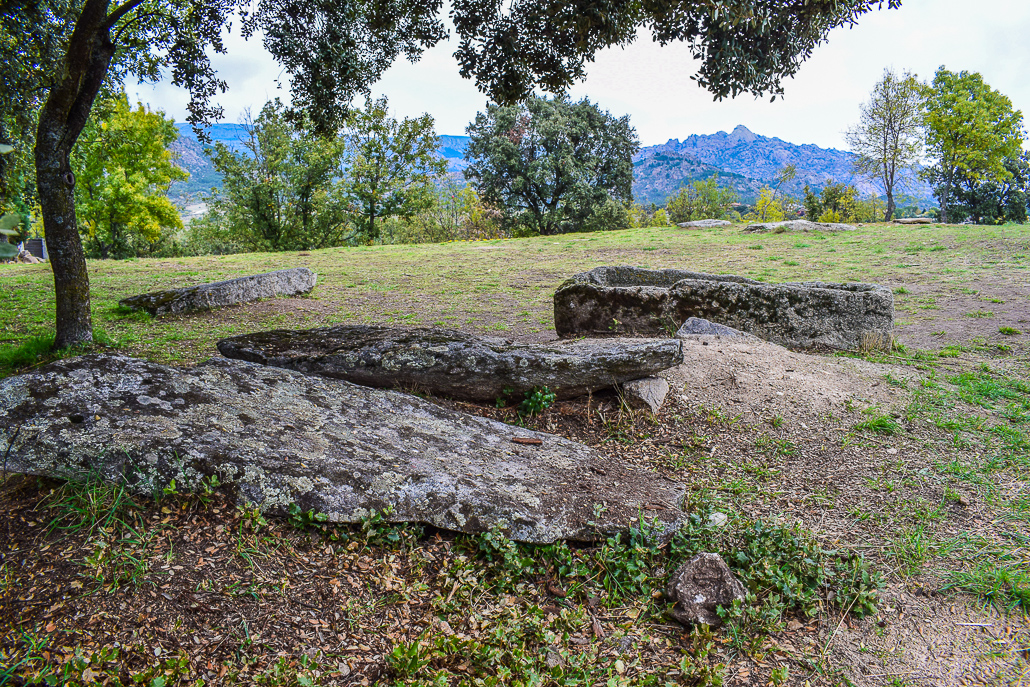
The three hamlets became villages during the Reconquest with the re-population movement that started in the 11th century, when shepherds from the Segovia Town and Land Community were looking for grazing land for their flocks.
The villages were always very small. In the 1752 census, El Boalo had 10 inhabitants and Cerceda and Mataelpino 20 inhabitants each. The local people lived from agriculture and stock breeding.
It was not until Spain was divided into provinces in 1833 that the villages were assigned to Madrid. The administrative merger of Cerceda, Mataelpino and El Boalo also took place in the 19th century. I have not been able to discover the exact date.
Traditional Architecture
Nothing but Visigoth tombs have been preserved from the Middle Ages and before. The people in this area were poor and only used materials provided by nature. The acidic granitic soil has decomposed all possible remains. This changed in the 19th century, when a new economic activity arose other than stock breeding. Quarries opened up that can still be seen today.
Most of the houses built of granite rock were built starting at that time. This traditional architecture forms part of the ongoing identity of the villages. The façade was built of stone with mud brick inside and the walls were not plastered. In some cases there was only a stone base and from the ground floor up they were built with whitewashed brick.
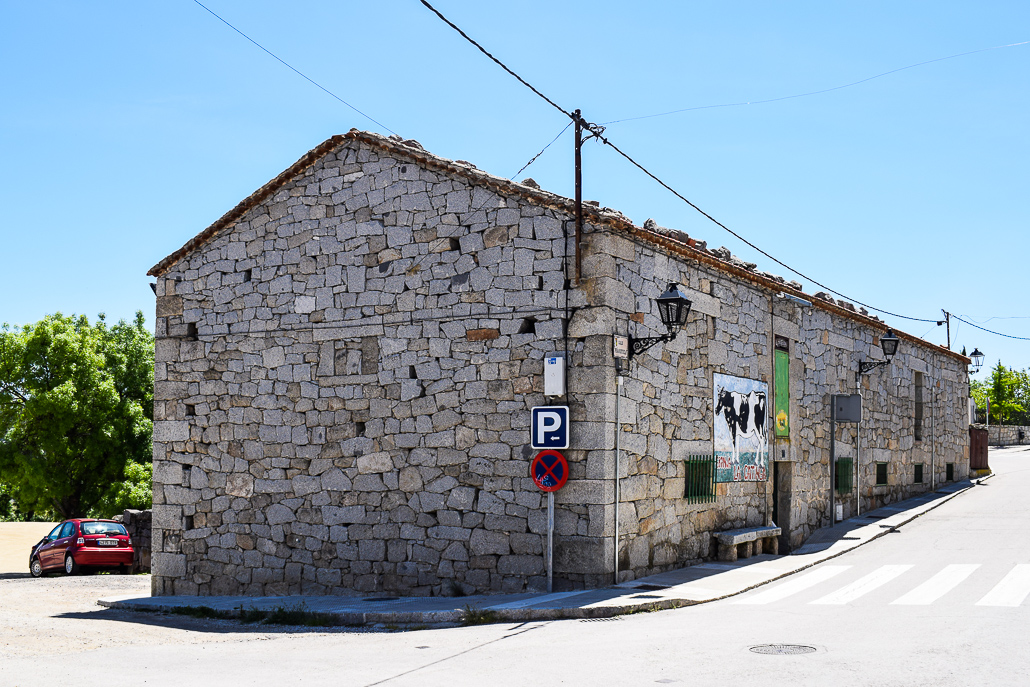
You will find one storey houses. Just a few have an upper floor. It was not unusual for the stables with the cattle to be underneath, with the family living above them.
As I said, in general they are simple, rather crude houses but they fit the climate very well. The windows are generally small, for protection against heat and cold. The windows upstairs in the bigger houses may have a narrow balcony. The roofs are built with wooden beams. Most roofs slope, are covered in Arab-style tiles shaped like a truncated cone, and have overhanging eaves.
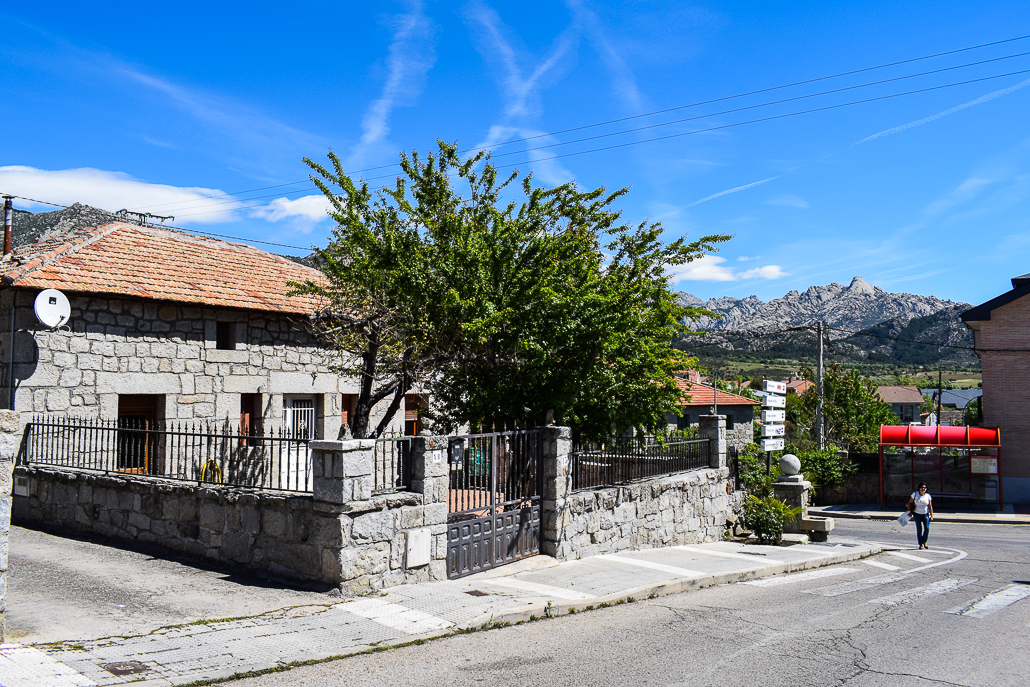
As well as country houses, there are also typical Spanish “road worker” houses like the one on the road to Manzanares el Real, which were built of stone. The job of the road workers was to keep one mile of the local road in perfect condition.
Lastly, but no less important, we must mention the churches, which were also built of local stone.
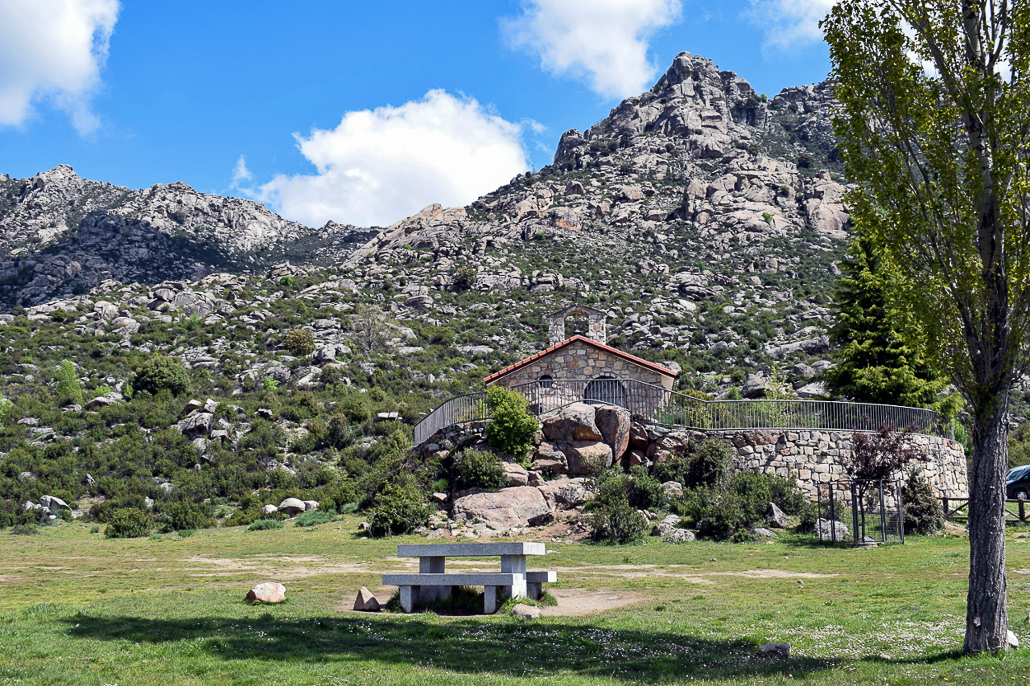
Stone walls can be seen everywhere in the countryside. The orchards and pastures are mostly surrounded by natural stone walls.
The Hotel Era
In the mid-20th century, it became fashionable for wealthy families who lived in Madrid to buy land in the villages of the Sierra to build their typical “hotels” (villas). They spent the summer months there because, as well as being a delightful setting, the mountains offered a cooler climate.
These villas can be found mainly in Miraflores. Only three remain here in El Boalo:
One of them belonged to Ramón Serrano Suñer, the brother-in-law of Franco and a powerful man in the regime after the war. Another belonged to Joaquín Ruiz Jiménez, who became Minister of Education in 1951. The most charming of the three belonged to author Carmen Martin Gaite, who sadly died in 2000.
The development of the villages in the second half of the 20th century.
After the 60s, new building materials appeared on the market, which meant that less stone was cut and migration began. People abandoned their fields and left them as pasture for the cattle.
Also, with Spain’s economic development, more and more people came from the capital, intending to spend their weekends and summer holidays here. The cooler and above all cleaner air and the natural greenery that was lacking in Madrid were what attracted them.
Already in the 80s, when I arrived in El Boalo, more and more “modern” houses were being built. The construction boom continued. The population of El Boalo, Mataelpino and Cerceda tripled (from 2,515 inhabitants in 1996 to 7,399 in 2018). Alongside this growth, the economy of these villages also changed. Agriculture, stock breeding and especially quarrying lost their importance compared in the face of the construction industry. A large number of urban developments grew up in which more people lived than in the villages.
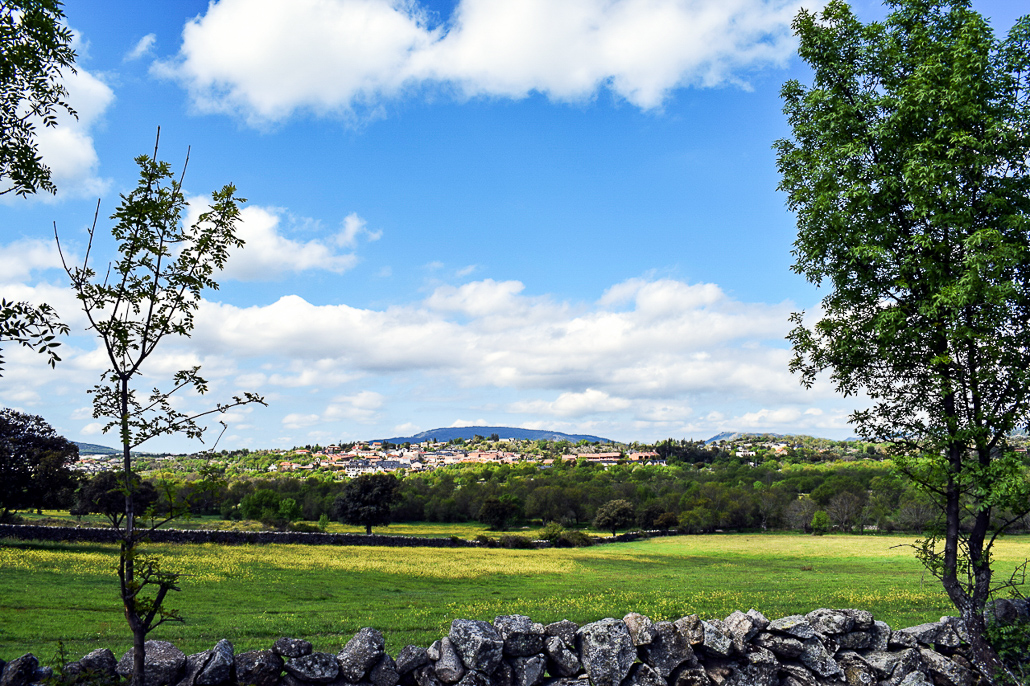
When the construction bubble burst at the beginning of the 21st century, a new phase began. The municipality’s economy is now largely based on the service and tourism sector. Stock breeding, which has been going on here since prehistory, has continued and even grown. The Sierra de Guadarrama was declared a protected designation of origin due to the excellent meat from cows that graze on the pasture lands and the mountainsides. If you go to Raúl de Lema’s butchers shop in the Plaza de la Constitución in El Boalo, you can try it for yourself.
Markets
Every second Sunday of the month there is a market in the square of El Boalo. Ecological and artisan products are on sale, as well as antiquities, in accordance with the standards of fair trade. You won’t be surprised to know that I like to go there. :-)
What I particularly like about El Boalo
You are surrounded by nature
What attracted us first is obvious: We were just 40 minutes from the city and surrounded by a fascinating natural landscape, literally at the foot of the mountains.
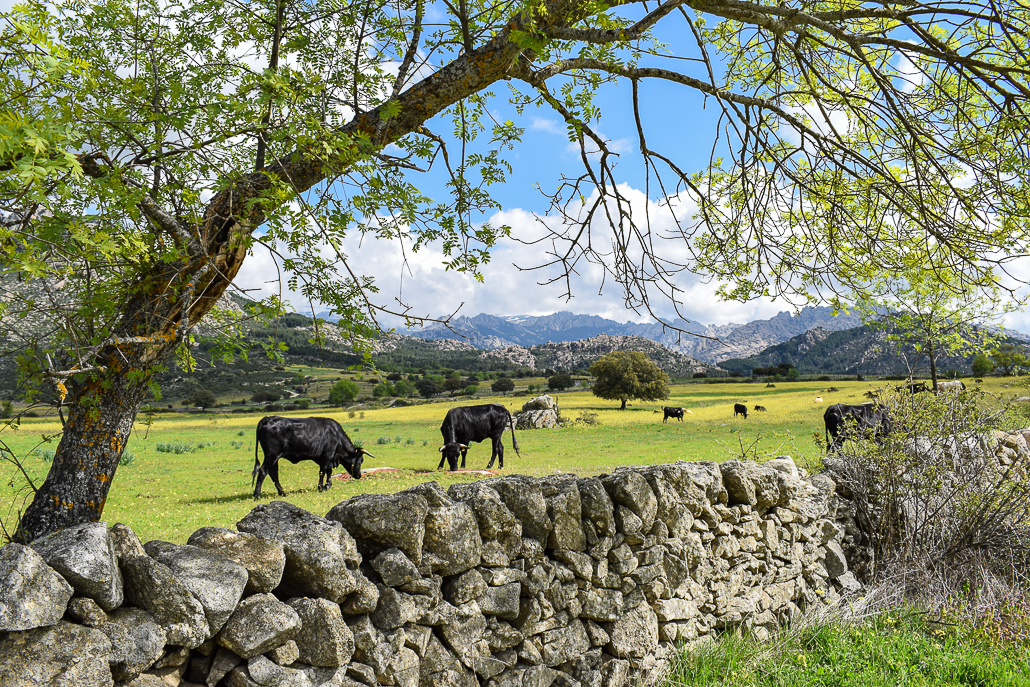
The village is our nest
Suddenly, we too had “our village”, our common village, of which we are proud as a peacock. (This was at the beginning of our life together as a couple that had to come and go between Germany and Spain for over 10 years.) All those who were lucky enough at that time to have a village boasted about it to their friends and everyone else, and it didn’t matter if you wanted to listen to them or not. Their village was always the best, where you could find the best of everything, better than anywhere else. The people there are also much more friendly and genuine. There was, of course, a great deal of romanticising in this, but it made you feel good.
Here you can unleash your adventurous instincts and your curiosity
We dreamed of being able to move freely around in nature and having a sense of freedom, not only for ourselves but also for the children that we wanted to have.
The city is restricting and has many obstacles that don’t let the little ones enjoy exploring the world, without strict parental supervision.
In the village it’s different. Here they enjoy more autonomy, away from their parents and from the strict timetable of the city. Here they can explore new tracks on their bikes and have races with other children with no problem. Falling down and getting up again is as much a part of this as seeing a calf born in the meadow. Abandoned dogs also want to be rescued. Here you will learn to ride, watch the animals and how to take care of them…
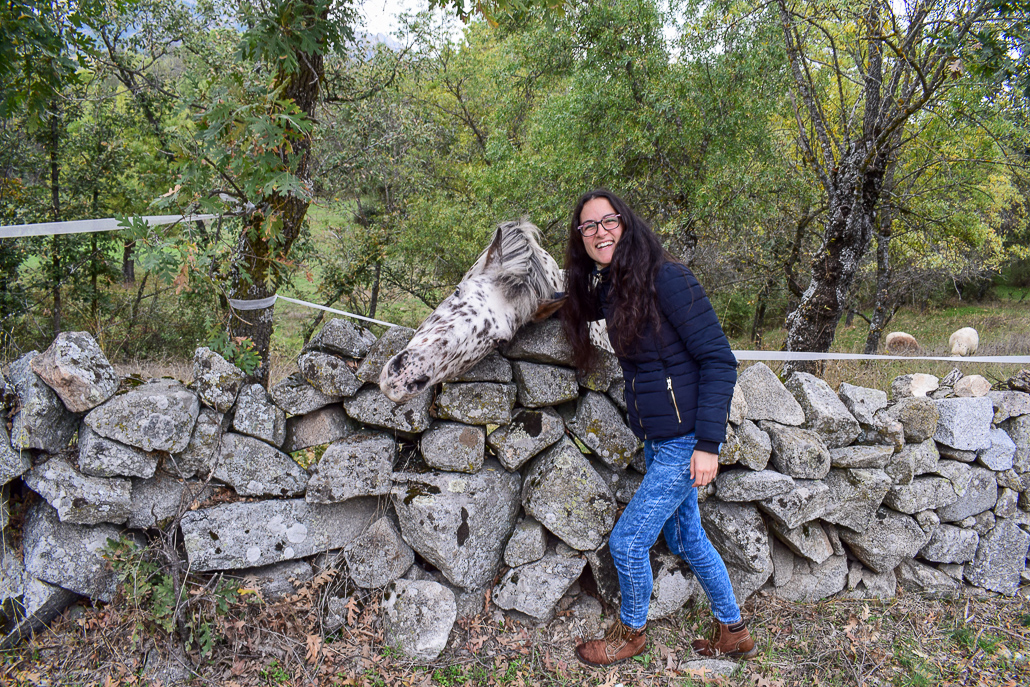
Here you eat as if you’re in the land of plenty
If you go walking in the mountains, there’s nothing more delicious than the sandwiches, omelette and olives from your backpack. Water has never had such a good taste as from the nearby spring. And if suddenly a bota bag appears with a swig of wine, well, your happiness is complete.
At home, you barbecue. It doesn’t matter if it’s meat or chicken, we like everything. Lamb chops, kebabs, chorizo, skirt or flank steak, chicken legs and wings, along with vegetables and salad, always taste better than cooked in the oven or a frying pan in the city. If you want to diet, you have a serious problem, or else you don’t, because all the food is delicious.
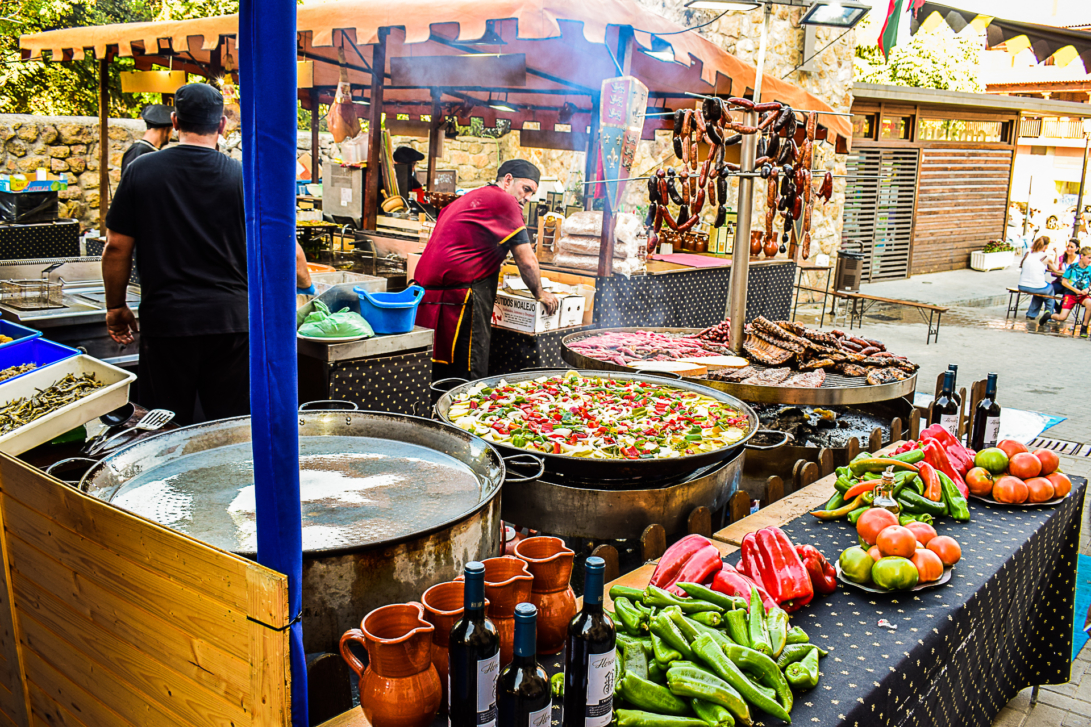
If you’ve embarked on the adventure of planting your own kitchen garden, you will also enjoy the real flavour of tomatoes and other vegetables. Although it takes quite an effort and time, it is a pleasure to harvest your own vegetables, and the children can find out how our food is grown.
Life is more exciting than television
In Madrid the television was always on, during meals, in the evening, until you went to bed. In El Boalo, in contrast, we didn’t miss the “box” in the least. It was almost frowned upon. We also didn’t have a telephone until mobile phones appeared. It was only when my mother died and we inherited her TV that we put it in the living room.
At night and in the morning you sleep and wake happily
In winter, watching the flames in the fireplace makes you sleepy and you snuggle into your welcoming bed. At night there is complete peace. Starting in spring, you leave the window open and enjoy the scent of nature. Sometimes you are aware of a slight smell of wood smoke from your neighbour’s house. In the village the air is different. Also, you can hear the cowbells ringing from afar. Here, the cows roam freely at night. Curiously, it’s not an annoying sound. Instead, it is relaxing, because it gives you the sensation that all is right with the world. Occasionally a night bird calls.
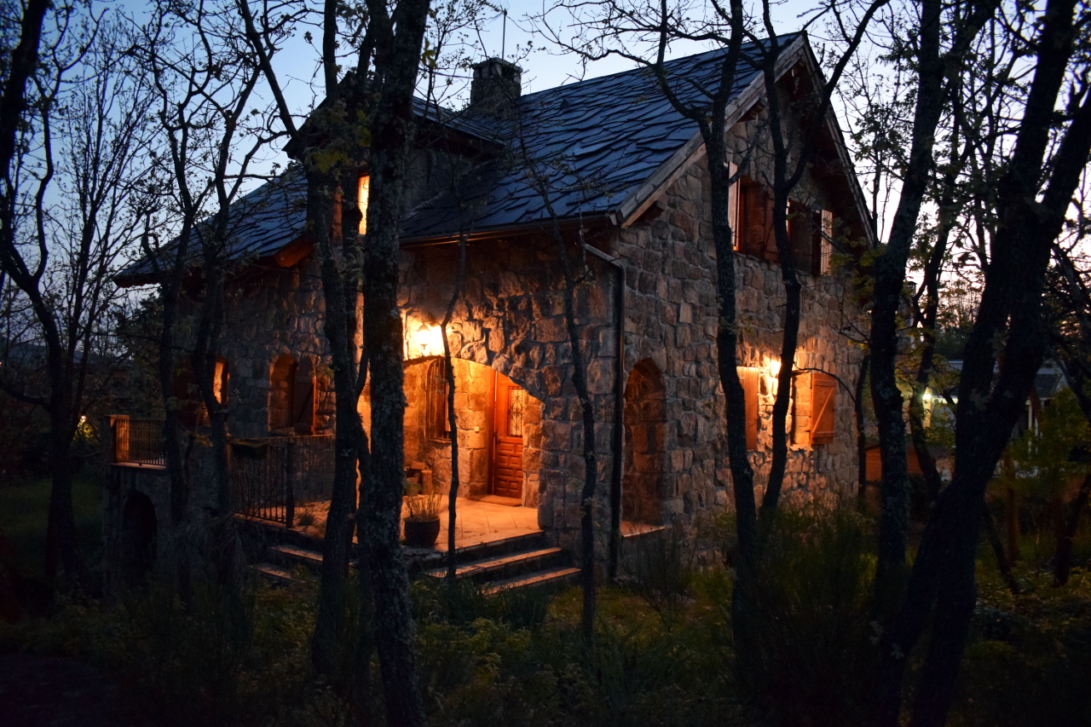
In the morning you wake up to the singing of the birds or the movements of the birds who have moved in under your roof to raise their chicks. We still have a swallow’s nest in our bedroom today.
We lived life in the village like porcupines
My mother-in-law (who is Spanish and was raised in a small village in Burgos) always said that spending time in the village was nice, but only for a week. She was alluding to the social control in villages.
Well, at least in the first few years, when El Boalo was only a third of the size it is now, everyone knew more about you than you did yourself. Everyone was curious about what the new people were doing, when, where, how and with whom. It was easy for us to get away from that, as we were always going back to the city. We did as in the saying about porcupines: Not too close but not very far away either. This was simply a running-in period and with the growth of the population it wore off.
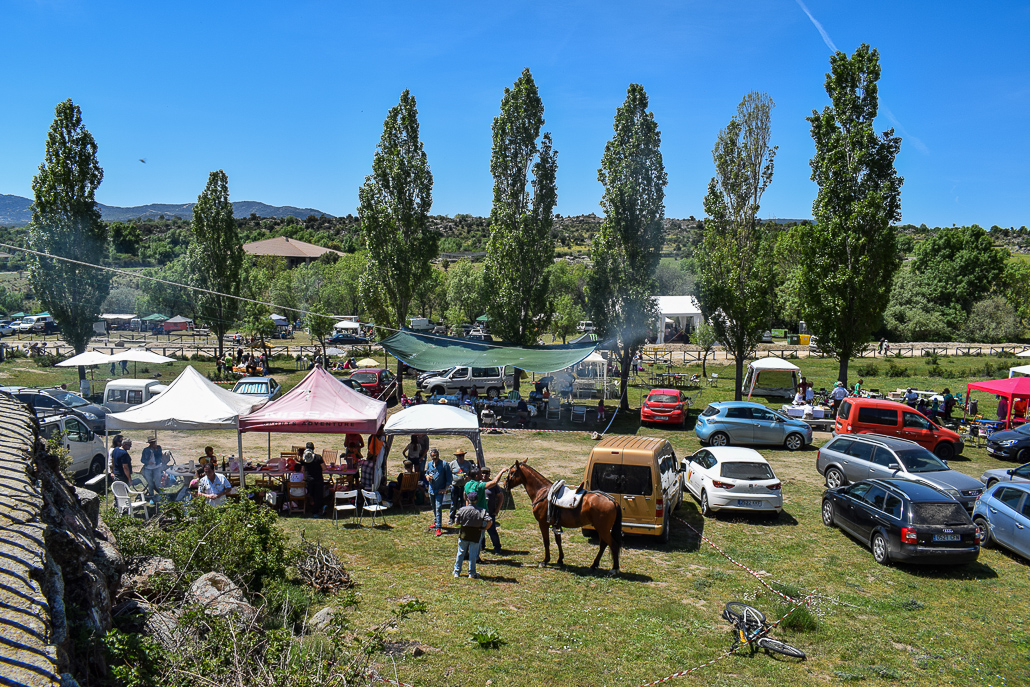
I have to say that, in recent years, the village has woken up in some ways. Possibly due to the influx of people from the city, most people have become aware that it is part of a larger society and that theyare the ones who shape it and are responsible for getting on with other people.
People have put aside their fears and their reserved nature and have begun to join in public life. Now, many of the neighbours take part actively in the politics of their village with the aim of living a decent life that fits in with nature and people’s needs.
El Boalo actively shares in the cultural and socio-economic development of the region
The village works actively on the socio-economic development of the region together with another twelve villages in the Sierra de Guadarrama and economic, cultural, handicrafts and sporting associations. Since 2015 they have had some success, with over 70 measures and projects in the areas of tourism, sustainability, entrepreneurship and self-employment, training for competitiveness, professional meetings, employment and communication.
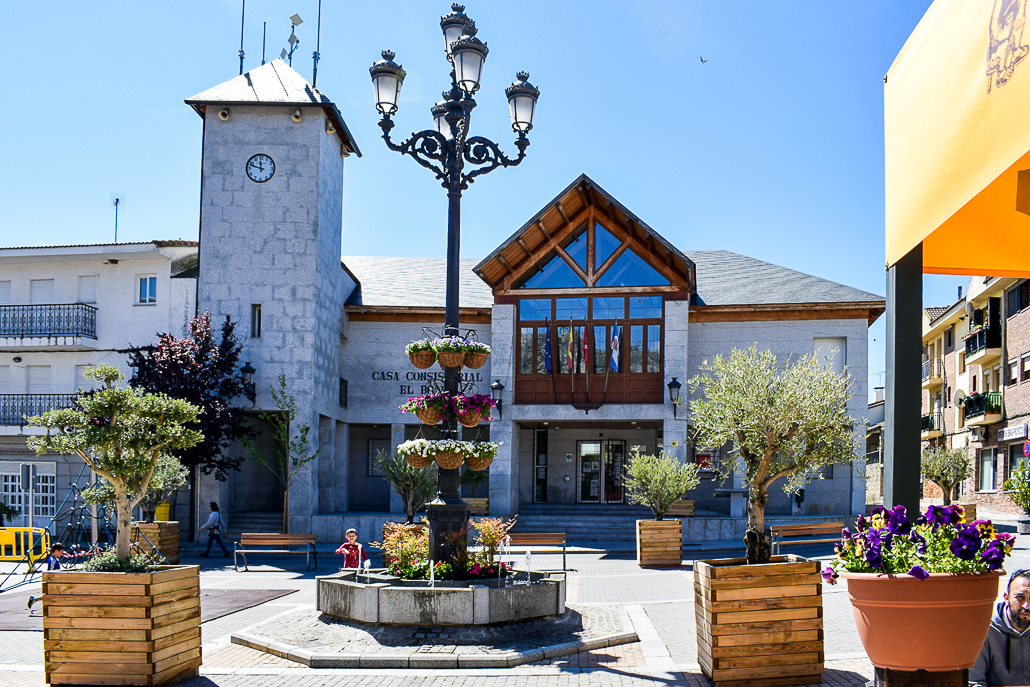
We now have a number of entrepreneurs here. These include a cooperative that makes the first and only ecological beer in the Autonomous Region of Madrid. It is also the first brewery in Spain to make it using the criteria of fair trade. There are also cheesemakers, artisans, etc. You will soon be able to read more about them in this blog.
People are more concerned about the village (the villages). They cultivate their traditions, but not just as folklore.
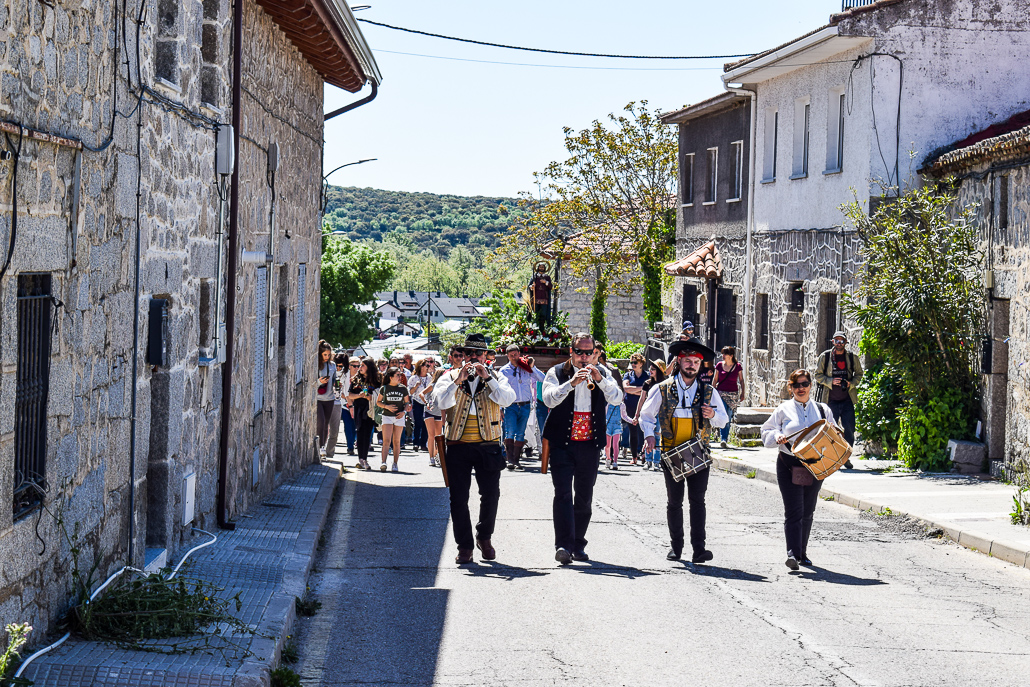
There is a surprisingly wide range of activities available in the areas of culture and education. If you come to El Boalo, take a look!
The village has its own flock of Guadarrama goats, which are in danger of extinction. The aim is to teach the population and the children of the village the importance of extensive, sustainable stock breeding. The animals also serve to prevent natural fires on the mountains.
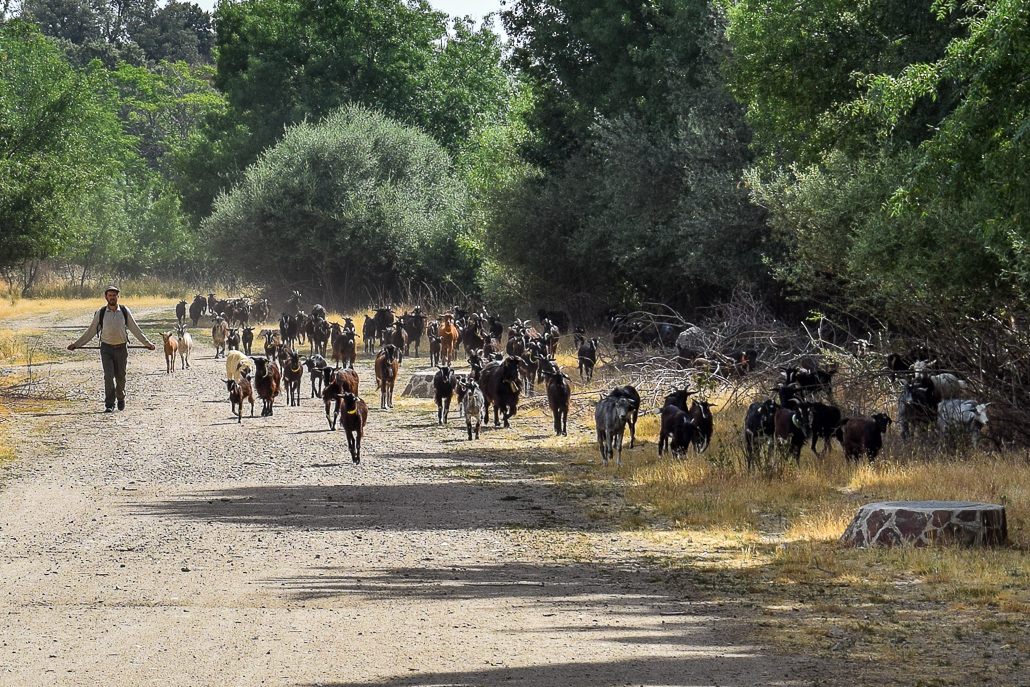
El Boalo has set up a zero waste management programme that includes this municipal flock, domestic composting and raising poultry. The results have been so spectacular that on 31 March 2017 Zero Waste Europe declared El Boalo to be the first zero waste village in the Madrid region. The following video provides detailed information on the project.
What more do you need to fall in love with the village?

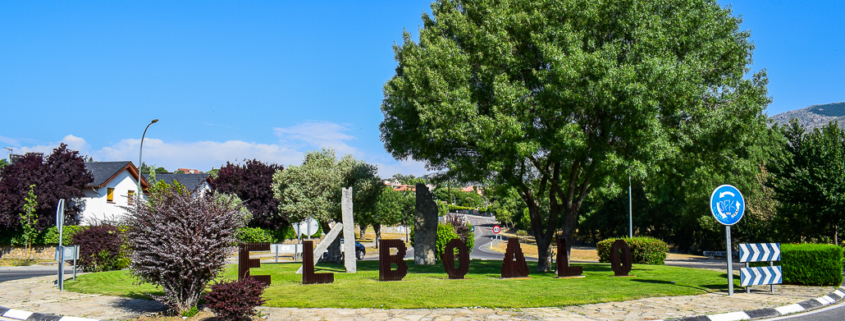


Leave a Reply
Want to join the discussion?Feel free to contribute!